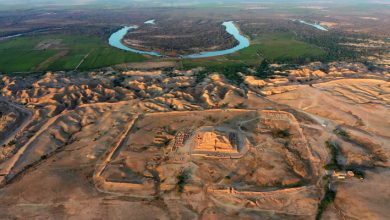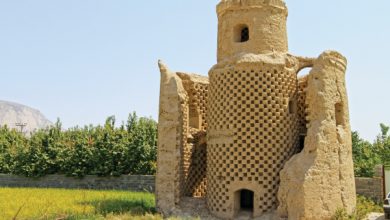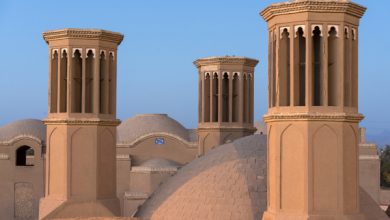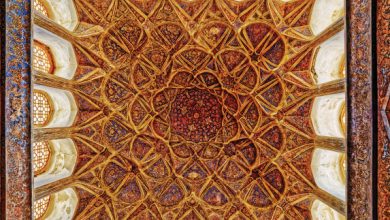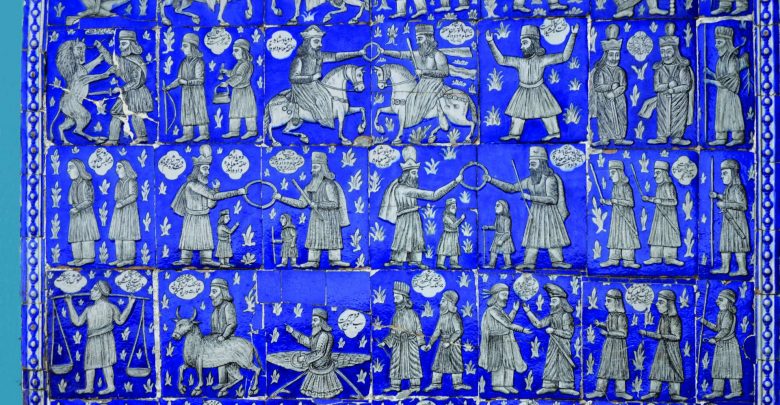
The Epic of Gilgamesh is the oldest, most complete literary writing on 12 clay tablets, consisting of 6 columns, each in 300 lines, except the 11th tablet, which is the shortest; found at Nineveh in the ruins of the library of the Assyrian king Ashurbanipal. This epic poem, in 3400 lines, is a historical figure and mythological hero. Gilgamesh, the historical 5th king of Uruk, a Sumerian King listed in records, lived a long life as he ruled for 126 years at around 2600 BC; although some believe he reigned around 2700 BC to 2850 BC. The Epic of Gilgamesh predates Homer’s writings by 1500 years.
The story begins with the birth of Gilgamesh. The king was told that a child born to a woman would deprive him of his throne as Naghmeh Samin said in “The Theatre of Myths”; however, his own daughter gave birth and the guards hurled the baby while he was intercepted in his fall by an eagle, which carried him to a garden. The gardener raised him. Hero legends, like Gilgamesh, Cyrus the Great and Moses, follow a similar pattern: prophecy warns kings of danger. Gilgamesh, the king who brought glory to Uruk and built the strong brick walls, was an oppressive leader, who treated his people harshly.
Description of Gilgamesh
He is two-thirds god and one-third human blessed by gods with courage and beauty; which he inherited from his mother. However, he inherited his mortality from his father. His attributes are those of a god, but like all humans, he must die: “The Great Goddess [Aruru] designed him, planned his body, prepared his form, /a perfect body the gods gave…”. It was believed that the king was appointed to rule on earth by gods and their representative. “His cheeks were flush with ample beard” as was any royalty. Beard was the element of beauty among men, so it was perfumed. Long beards were commonly used to represent the kings, heroes, philosophers, and gods.
Gilgamesh as a King
Gilgamesh was strong and brave, but he was also arrogant and harsh to his people. This made them pray to the great god, Anu, to create a rival for Gilgamesh. Enkidu, a wild man created out of clay, who was raised in the wilderness with the beasts, in stark contrast to Gilgamesh’s home which was in the city was sent to challenge him.
“Gilgamesh is a man of culture while Enkidu is a man of nature” as Hendel says. Soon a trial of strength happens between them, by which the nature-culture contrast was most striking. Finally, they became friends while dominion of culture over nature asserted; hence, the theme of the epic of Gilgamesh. Finally, Enkidu dies and his death devastates Gilgamesh who sets off on a great journey to find immortality in which he fails. Gilgamesh could not master the challenge of conquering death as a culture could not escape nature in mortality. Culture not only destroys some parts of nature but harms itself. Enkidu leaves the wilderness and enters the world of civilization, while Gilgamesh leaves the civilization and goes out into the wilderness seeking immortality. Gilgamesh dies eventually but Utnapishtim is the one that becomes immortal. Utnapishtim was instructed by Ea, the god of wisdom, to build a ship to save “the seeds of all living things” as the gods have decided to destroy the seed of life by a flood: the symbiotic relationship between humans and animals; or the relationship between nature and culture. The ship (culture) which was loaded with animals (nature) is survived by the leadership of the one that becomes immortal. His immortality is “sustainability”.
A step further is to consider the the‚ relationship between women and nature which leads to culture. In ancient times women were the origin of fertility and were considered as the source of life due to their childbearing ability. Earth is fertile and reproductive, just like women, and gives life to plants. So, women and agriculture intertwined since it was believed that women created agriculture. But, what is the relationship between culture and agriculture?
“Culture” came into use during the Middle Ages and derived from the Latin word “culture” for cultivation, referred to “people’s role in controlling nature”. But now, it refers to “the ideas, customs, and social behavior of a particular people or society” and in Biology, it means “the cultivation of plants”. As Nasser Takmil Homayoun says in “Morphology of Cultures” in French it means “to nurture and to grow”, in Russian “the sense of thought and spiritual conditions and natural human reception”, in German “ecological methods, the lives of nations and their values”, in Italian it refers to the education and learning and the customs and social behavior of people and its meaning in Greek is “human’s soul and spirituality and land and its cultivation”.
The goddess of creation, Aruru, created Enkidu as a rival in strength to Gilgamesh, to whom a woman, Shamhat, was sent to tame him. He soon left the wilderness with his consort for the city of Uruk, which is the symbol of culture, and he was shunned by the animals he lived with. He leaves nature to live in a culture. Eventually, Gilgamesh failed to reach immortality as he rejected Ishtar, Mesopotamian goddess of love. Incurring the wrath of the goddess paved the way to loose fire which led to unfavorable events. Enkidu became ill and finally died. Gilgamesh tried to avoid Enkidu’s fate by going on a quest for immortality, but he failed and died too. The duplicate dreams of Gilgamesh were seen in the Epic of Gilgamesh both of which were told to his mother, Ninsun, and interpreted by her. He saw a rock in the first dream and an odd-shaped ax, both of which were interpreted as the mighty man who came to him, Enkidu: “I did account it as your own equal”. Being as a rock indicates his strength, Enkidu’s “strength is the greatest in all the length and breadth of this land”, and the ax shows that he is a companion to Gilgamesh as he is a warrior.
They met each other and wrestled fiercely in the city square. Some say they smashed doorposts of the holy gate. The doorposts act as the symbol of “spiritual transition” and the wall shook until Gilgamesh finally subdued his rival: culture overcomes nature in a civilized life (culture) but not in the wilderness (nature). Enkidu declared his friendship to Gilgamesh. The two became close friends as, Ninsun, Gilgamesh’s mother, who acts as an intermediary between nature and culture, supported their friendship which paved the way to seek the real reason behind their creations: becoming a strong counterpart but not enemies and forging their friendship which would result in beating their enemies. Their spiritual tie sometimes turns into spiritual conflict. They become “one soul in two bodies” which leads them to the same fate. It could be concluded that reaching perfection is the result of being together; the two together reveal the image of a perfect man. In other words, although culture destroys nature, it has no other way except reconcile with it: culture uses different elements to tame the wild forces of nature but soon understands not to destroy it.
The rest of this article is published in the 1st volume of Gilgamesh international edition
